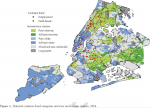Fight and Build: Envisioning Solidarity Economies as Transformative Politics
Thanks to Steve Dubb and NPQ for adapting this essay for their readership. This article is, with publisher permission, adapted from a more extensive journal article, “Fight and Build: Solidarity economy as ontological politics,” published this year by Sustainability Science, volume 17, pp. 1207-1221.

